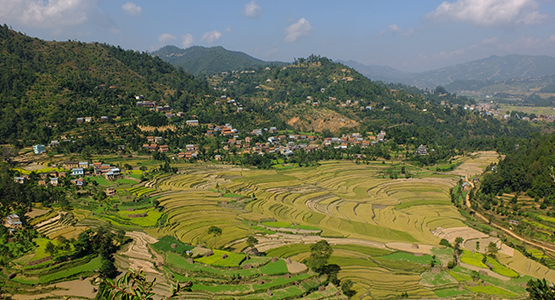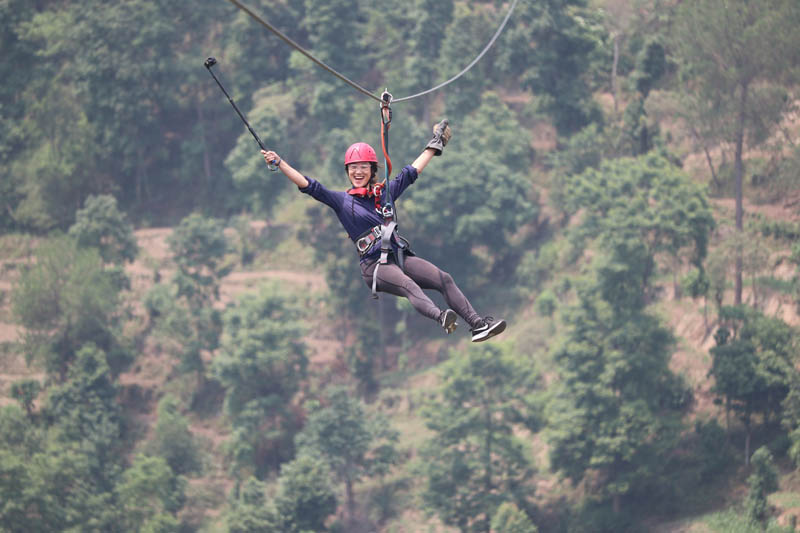Wondering about the best places to visit in Dhulikhel? Mountains are something you can never get enough of. You want to stay there forever and breathe in the crisp, clean air because of the majestic peaks’ stunning splendor and tranquility.
One such location is Dhulikhel in the Kathmandu Valley, which provides beautiful views of the high Himalayas and the range of peaks that it is made up of, starting with the Langtang Lirung in the west and continuing with the Dorje Lakpa, Gauri Shankar, and Melungtse, before ending with Numbur in the east.
To take in these expansive views, you must be ready to climb a bit higher than the settlement. Dhulikhel is a genuine Newari town and is, therefore, the ideal spot to come to if you want to explore the authentic culture and tradition of the region; it is unlike Nagarkot, which is also a well-liked tourist destination in the same region.
This is possibly why visitors frequently stay for about two nights to fully explore this adorable tiny town and enjoy the mountain sunshine. There are also leisurely walks all over the hamlet, so visitors can explore on foot.
6 Best Places to Visit in Dhulikhel
Every day, the resorts in Dhulikhel offer the ideal setting for taking in the dark and dawn. Dhulikhel is a lovely city, situated 30 kilometers outside the Kathmandu Valley. The naturally lovely location has a wide range of cultural influences.
Once at Dhulikhel, it appears as though everyday obligations have already passed.
One may enjoy the breathtaking panoramic views of the mountain ranges of Langtang, Mt. Duje Lakpa, Melungtse, etc. from this location at the foot of the mountains. Numerous attractions at the well-liked tourist location make visitors yearn for the city.
Discover the amazing beauty of Dhulikhel by visiting these places. Here we have mentioned the best places to visit in Dhulikhel:
1. Walk Around the Heritage Places
(1).jpg)
The Newari people are the residents of Dhulikhel. As a result, the city not only has stunning natural scenery and scenery but also has the traditional locals’ cultural aspects.
Numerous Hindu temples can be found nearby, which enhances the local culture. The list of cultural landmarks that one can visit to have a phenomenal feel for the culture in Dhulikhel includes Shiva Temple, Kali Temple, Ganesh Temple, Chandeshwori Temple, Hari Sidhhi Temple, Bhagwati Shiva Temple, and Gita Temple.
The heritage tours of the temples and shrines are a serene activity you shouldn’t miss. Additionally, the Kailashnath Mahadev Statue is located in Dhulikhel.
2. 1000 Steps: Selfie Stone
.jpg)
One of Dhulikhel’s most notable attractions is the selfie stone. The stone is next to the Kali temple on top of a hill. The route to the Kali temple involves climbing 1000 stairs (Hajaar Sidi). Walking up the hilltop is enjoyable since it leads to a view worth it. The beautiful view that can be seen from there makes one happy inside.
The hill’s gorgeously placed selfie stone attracts people to take pictures there. The beautifully oriented stone features a breathtaking picture of the Himalayas, lush hills, and communities, which makes it a priceless memory to record.
3. A Day Trip From Kathmandu to Namo Buddha
.jpg)
Namo Buddha, one of the three principal shrines, has significant religious and historical significance. According to the Buddhist religion, the three sanctuaries of Bouddhanath Stupa, Swayambhunath, and Namo Buddha are the sources of peace and harmony.
It is located in Nepal’s Kavre District, just 13 kilometers from Dhulikhel and 43 kilometers east of the Kathmandu Valley. It’s also fascinating to see the scene from the forest’s distance. On the other hand, as soon as you arrive at the location, the built-in monastery, statues, and wall paintings will fill you with a sense of calm.
The monastery was initially constructed as a location for individuals to study Buddhism, engage in rituals, offer prayers, and safeguard the Buddhist faith’s significant sites. The monastery’s building transformed it into a stunning, crucial religious landmark that is now popular with domestic and foreign tourists.
4. Day Hike from Namobuddha to Balthali Village

A fantastic day adventure in the middle of nature is the Namobuddha Balthali Day Hike. After investigating Namobuddha Monastery’s magnificent and distinctive architectural features and spiritual atmosphere, it starts there.
As you descend the slopes, you travel past orange groves, explore the local ethnicities, cross a suspension bridge, and then tour the lovely Balthali village. After finishing the hike at Khopasi, continue driving to your destination.
Also Read: Kathmandu Tour Guide | Kathmandu Sightseeing And Things To Do
5. Statue of Kailashnath Mahadev (Sanga)
(1).jpg)
The highest Shiva statue in the world stands over 140 feet tall and is made of zinc, copper, steel, and cement. This famous site, near Dhulikhel in Sanga, has breathtaking views and receives thousands of people each week.
This 144-foot tall statue, which represents the hand gesture (or mudra) bringing blessings of peace, was finished in 2011 after seven years of building. It is located about 12 miles east of Kathmandu. Shiva is made of copper, zinc, concrete, and steel and is almost as tall (151 feet) as the Statue of Liberty. The Hindu deity is also the second highest in the globe.
Shiva is accompanied by his recognizable trident, which symbolizes his three roles as creator, preserver, and destroyer, as well as a damaru (drum), which he employs in his dance. The serpent Vasuki, who stands for strength and bravery, also garlands Shiva.
Shiva is accompanied by Nandi, a bull that stands in for Pashupati, or “Lord of Cattle,” another of Shiva’s guises. There are 12 Shiva lingams around the statue in the temple complex, which, depending on the source, may or may not be phallic symbols. They signify Shiva’s function as a creator and fertility deity.
Mahadev means “great god,” whereas Kailashnath means “Master of Mount Kailash.” Shiva’s traditional residence, Mount Kailash, is a 21,800-foot-tall mountain in China’s Tibet Autonomous Region, close to the northwest corner of Nepal. It is close to the Indus, Brahmaputra, and Karnali rivers’ sources.
Earlier this year, a new 738-foot pedestrian suspension bridge was built over the congested Araniko Highway to make it easier for pilgrims and visitors to reach Shiva’s mount. Even without the climb up to the monument, the views of the Himalayas and the Kathmandu Valley from the bridge are worthwhile.
6. Ziplining

Talking about the Dhulikhel Zip Line Experience, have fun and let your heart race as you soar into the air over breathtaking sites. We will pick you up from your Kathmandu hotel and drive you to the activity site to begin the tour. You will meet the expert there.
You get assistance from an expert with the safety gear. The 72-meter plunge follows the safety check. Awe-inspiring scenery in Dhulikhel is waiting for you on this excursion. Start now and make memories worth sharing that will endure a lifetime.
Dhulikhel Zip Line Experience hours are 7:00 am, 10:00 am, and 12:00 pm.
Conclusion:
Most of the Kathmandu Valley Cultural Trekking Trail is located in Dhulikhel Municipality. This five-day journey offers a quick hike with the Himalayas in the background, and it goes through areas with a diverse population of animals and plants.
Visiting hill stations like Chisapani, Nagarkot, and Dhulikhel will be exciting and rewarding and are the best places to visit in Dhulikhel. One of the beginnings or midpoints of hiking routes is the municipality of Dhulikhel.
These include walks that can take up to a half day to Panauti, Kavre Village, Opi Village, and Hazaar Sindhi. A longer walking path includes the Namobuddha and Nagarkot trails.
The municipality is also one of the locations for mountain biking, offering rugged terrain in addition to the presence of people from diverse ethnic backgrounds and beautiful mountain landscapes. There are routes from Dhulikhel to Panauti, Khopasi, Palanchowk, and Namobuddha, among others.
A beautiful panorama of Dhulikhel’s snow-covered mountains. The lower slopes of the mountains seem to float in the air when a blue haze surrounds them. The welcoming green hills, some of which are still undeveloped and some have been transformed into exquisitely carved agricultural terraces, are pleasing to the eye.